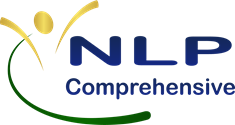Most people treat NLP like a set of tools—pull one out when life gets messy, put it back when things are fine. But the real magic happens when NLP isn’t something you use—it’s something you are.
We’ll explore how to embody NLP principles so they show up in how you speak, decide, and lead—without thinking about it. Along the way, you’ll see one “Tuesday at 3 p.m.” story that shows NLP in action in an ordinary, high-stakes moment.
Why Embodiment Matters
Techniques are useful. You can learn the Meta Model to clarify vague language, the Swish Pattern to shift habits, or anchoring to access resourceful states. But if those skills stay isolated—only applied when you consciously remember to use them—they’ll never have their full impact.
Embodiment is different. When NLP becomes part of how you process experience, it stops being a separate skill set and starts being the default operating system for your communication, decisions, and self-management.
It’s the difference between thinking, I should reframe this and automatically offering a reframe in the flow of conversation—without planning it first.
The Gap Between Knowing and Being
Every NLP practitioner starts in the same place: learning the tools. At first, you have to remember which pattern fits which situation consciously. You think about the sequence, recall the steps, apply it, and review the results.
Over time, if you keep practicing, you stop reaching for the toolbox and start embodying the mindset behind it. Instead of “using” NLP, you’re living its presuppositions—beliefs like:
- People respond to their experience, not reality itself.
- There’s a positive intention behind every behavior.
- If what you’re doing isn’t working, you can change it.
When these presuppositions become reflexive, the tools flow naturally.
The “Tuesday at 3 p.m.” Moment
It was a Tuesday afternoon. The day had been running smoothly—until a colleague walked into my office visibly frustrated. A major client had sent back a project with harsh feedback. Deadlines were now at risk, and the team was tense.
Old me might have matched their stress, jumped into rapid problem-solving, or fired off defensive emails. NLP-trained me paused.
First, I checked my state—feet flat on the floor, steady breath. Then I matched their physiology just enough to maintain rapport, before gradually softening my tone and posture to guide them toward calm.
As they explained the problem, I used Meta Model questions to uncover specifics:
“When you say the client didn’t like it, what exactly did they say?”
“What part of the deliverable are we talking about?”
The vague “they hated it” became a clear list of three fixable concerns. I reframed the situation:
“So we’re not dealing with a total rejection—we have targeted adjustments to make, and time to make them.”
By the end of 15 minutes, we had a plan, the colleague was smiling, and the atmosphere had shifted from crisis to challenge.
That’s embodiment. I didn’t stop to think, Which tool should I use? The presuppositions and patterns were already wired into my way of being.
How to Move From Tool to Lifestyle
1. Live the Presuppositions
Choose one NLP presupposition per week to embody consciously. For example, “The meaning of communication is the response you get.” Notice every interaction through that lens.
2. Integrate State Management
Make state checks a habit. Before key meetings, phone calls, or problem-solving sessions, scan your physiology, focus, and language. Shift them if they’re not serving the moment.
3. Practice Micro-Applications
Look for small, everyday opportunities to apply NLP—such as clarifying a friend’s story with a gentle Meta Model question, reframing a family member’s frustration, or adjusting your language to match someone’s representational system.
4. Reflect and Reinforce
End each day with a 2-minute reflection: Where did NLP show up naturally? Where could it have helped if you’d remembered? Over time, the gap between those two shrinks.
Common Roadblocks to Embodiment
- Overthinking: Waiting for the “right” tool instead of engaging naturally.
- Inconsistent practice: Using NLP in training but not in real life.
- Treating it as performance: Turning NLP into a set of tricks rather than a way of interacting authentically.
Embodiment doesn’t mean you’re “on” all the time—it means the principles have become part of your default mode.
Why This Matters
When NLP is something you are, you can handle high-stakes moments without scrambling for the manual. You de-escalate conflict without thinking, guide conversations toward clarity without force, and shift your own state before external stress takes over.
From a Core Impact perspective, embodiment is where Behavioral Design and Experience Design converge. Others experience you as calm, clear, and resourceful because you experience yourself that way internally—consistently.
Practice: The 7-Day Embodiment Challenge
For the next week, pick one NLP presupposition or pattern you want to integrate.
- Day 1–2: Apply it in low-stakes situations.
- Day 3–5: Use it in at least one high-stakes or emotionally charged situation.
- Day 6–7: Reflect on how often it showed up without you thinking about it.
Track your experiences, not just your successes. Embodiment is about consistency, not perfection.
From Conscious Use to Unconscious Competence
In skill learning, there’s a stage called unconscious competence—you’ve practiced so much that the skill is automatic. That’s the goal with NLP. Not so you stop learning, but so you can focus on connection, creativity, and impact instead of mechanics.
When you’ve reached this stage, the line between “using” NLP and “being” NLP disappears.
What If This Became Who You Are?
What would change if every conversation, decision, and reaction you had was guided by clarity, curiosity, and flexibility—without you having to think about it?
- What if the principles you value most showed up in your behavior, even under pressure?
- What if the “Tuesday at 3 p.m.” moments of life became your best demonstrations of skill, not your greatest stress tests?
That’s not reserved for advanced practitioners. It’s the natural result of living NLP instead of storing it in a toolbox.

